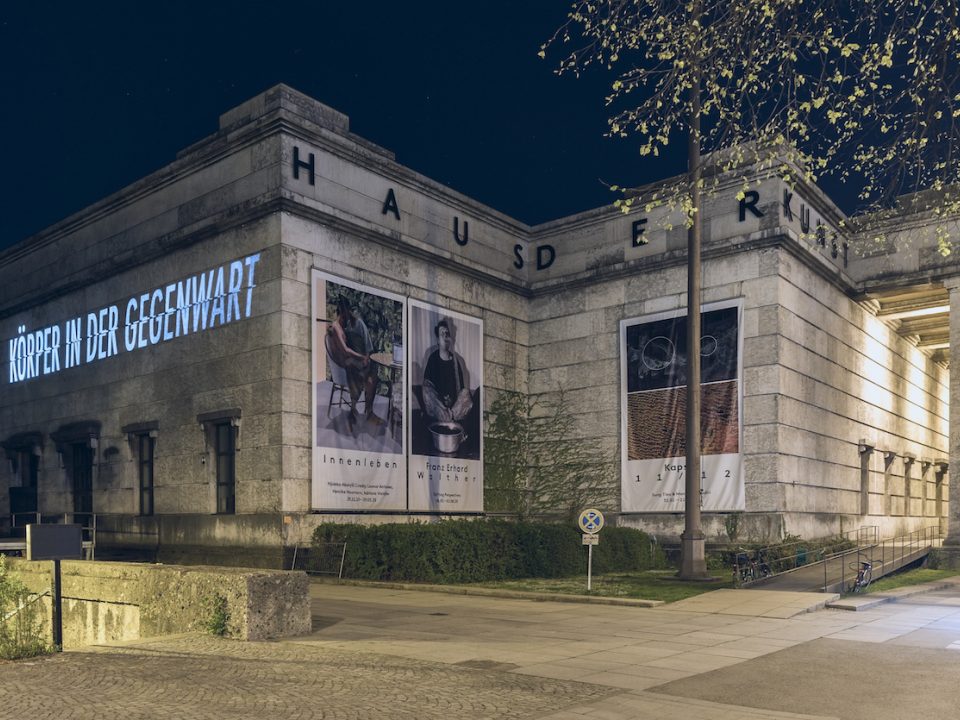For four days, the website of Haus der Kunst became a work of art by replacing it with the digital manifestation of Franz Erhard Walther’s work "Presence" (2020) as part of his retrospective "Shifting Perspectives". Parallel to this, the same conceptual work was projected onto the western façade of Haus der Kunst, where it will remain for forty days from sunset to sunrise.
In a time that demands physical distance, it is nevertheless important to maintain closeness to one another. Not to lose public spaces, but to think about how to transform them. To try out new forms of cooperation and to act for one another. In the current situation, more than ever before, the institution of the museum is called upon to develop innovative ways of allowing people to participate in artistic content, regardless of location. To overcome the boundaries of architecture, to turn content from the inside out, to transfer it from real to virtual space.
Human beings and their relationship to space, place and time have been at the centre of Franz Erhard Walther’s six decades of artistic work since the very beginning. His four-part language piece "Presence" contains following sentences:
BODIES ARE THE BOUNDARY
TOWARDS THE SPACE
THE COINCIDENCE OF HISTORY
BODIES IN THE PRESENT
The human body and language serve him equally as materials, with which he appeals to the viewer’s imagination. In doing so, he has devoted himself to the contrasts of static and transitory, material and immaterial.
Already with the early Word Images of the 1950s, Walther appealed to the viewer’s imagination in an effort to evoke specific associations to purportedly distant places such as New York, Cairo or Moscow by means of the monochrome backgrounds and brightly contrasting coloured letters. The intensely coloured Word Images thus already point far beyond what he learned during his training in the typography class at the Werkkunstschule in Offenbach. Conscious of his initial position as an outsider, he formulated at an early stage an intuitively analytical perspective on the art world and its criteria of inclusion and exclusion with further text images such as i was outside, museum and collection, which reflected, among other things, conditions characterised by a lack of participation.
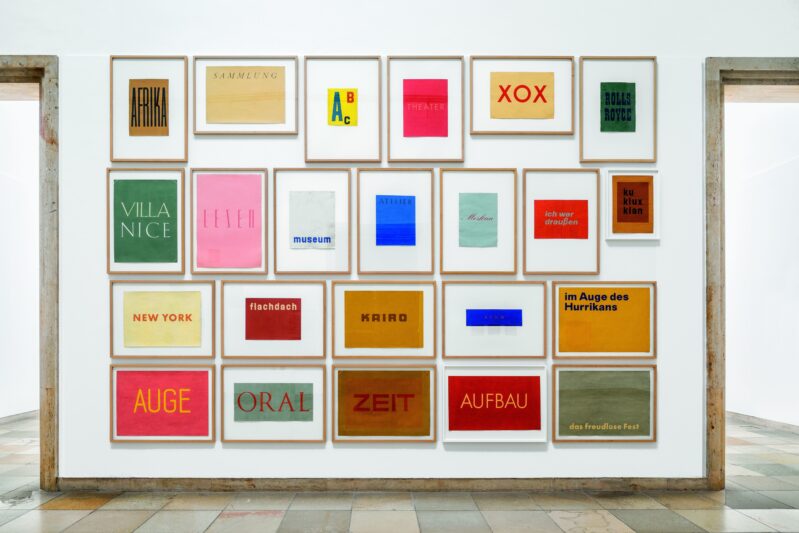
Walther always understood his artistic work as a turning towards the human being. He thus began to advocate a more humane reality of life in a post-war society that was insecure and had found itself in a systemic crisis. With the First Work Set (1963–69), Walther specifically addressed the mind and one’s own self, as well as one’s vis-à-vis. All fifty-eight cotton-fabric pieces of the First Work Set share in common that they invite the viewer to take action. This triggers a diverse spectrum of thought, perception and emotional processes in the user. When the pieces are activated, an impressively diverse communication takes place and interpersonal situations are initiated, which are determined by a high degree of sensitivity for the vis-à-vis. Walther has always devoted himself to an exploration of closeness and distance, of turning towards and turning away from each other.
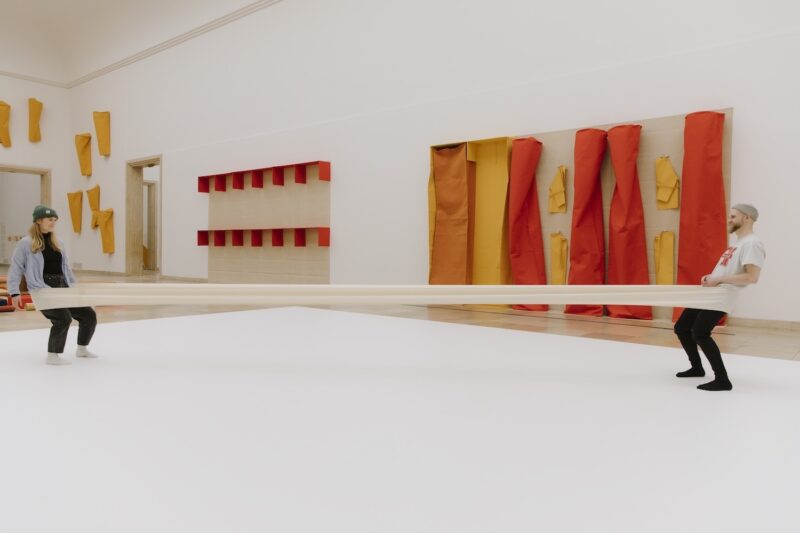
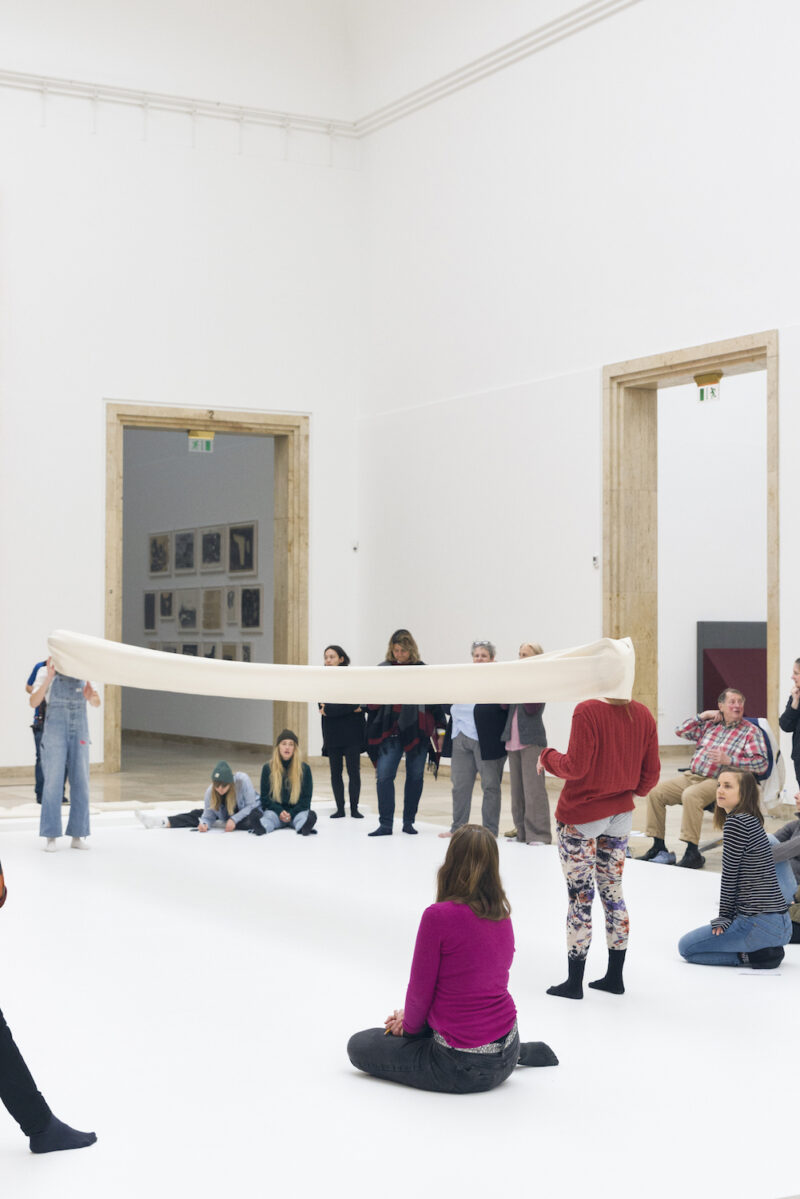
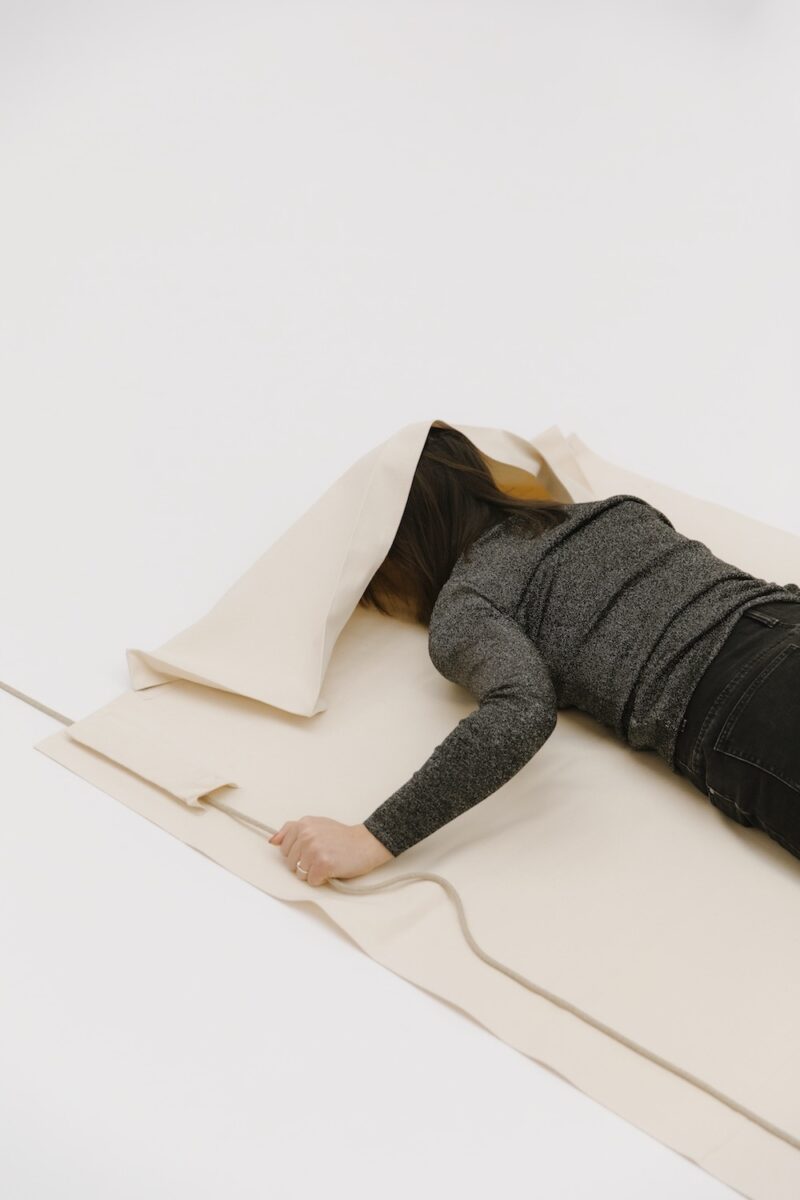
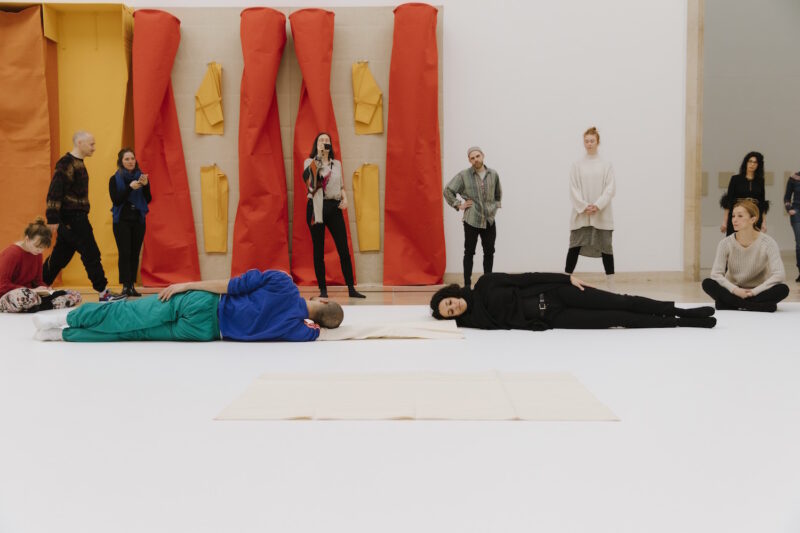
He is following his principles of participation, co-determination, personal responsibility and decision-making with his work Presence, 2020. K In the spirit of his work activations, which create interactions between the interior and the exterior, he takes up the purported antipodes of person and object in an effort to reconcile these. In this way, we propose with focusing this work temporarily to open up to an entire body of work from a different perspective It is an expression of the will to participate in order to make a virtual and real art experience possible simultaneously, but also to question its effectiveness.
Franz Erhard Walther mentioned during the preparations for Presence, 2020: ‘Language is material. Language develops images. Language encapsulates space. Language brings together. Language connects spaces. Language bridges time.’
With the work Presence, Walther and Haus der Kunst invites the real and virtual viewers to overcome time and space in our minds, to connect. He brings about a visualisation of immaterial but present states in the spirit of conceptualism. In contrast to a fast pace of life and stimulus satiation, he evokes contemplation. It is impressive to what extent Walther – as a pioneer of transformative processes in interactive art using the simple and essential means of language – once again transfers his work into an expanded space of reception. At the interface of mind and matter, he thus lends new clarity to a reflection of media.
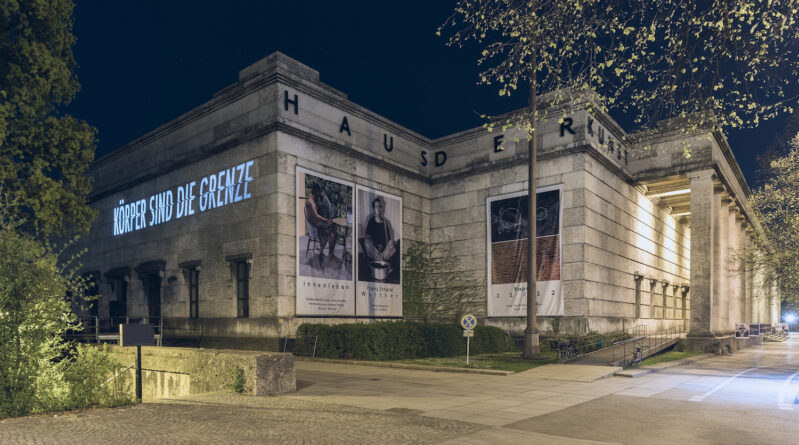
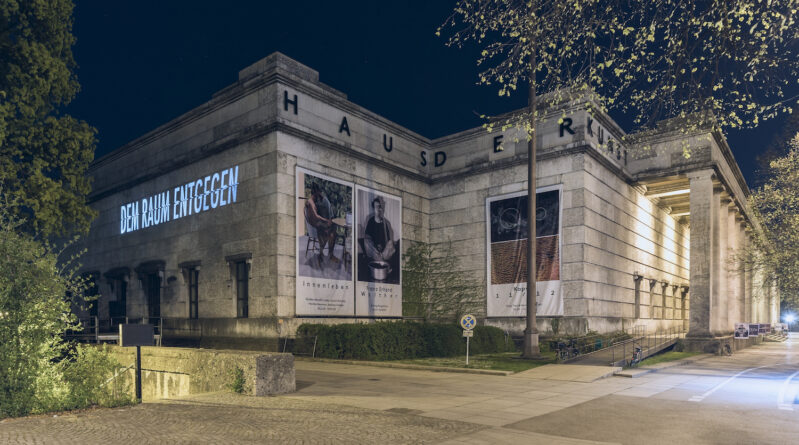
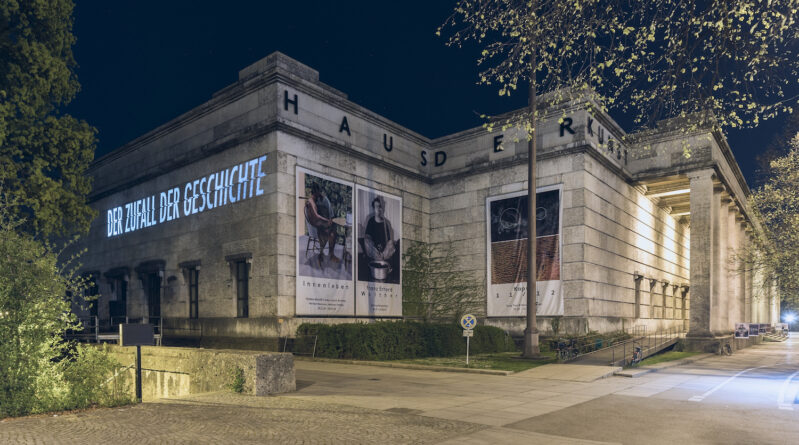
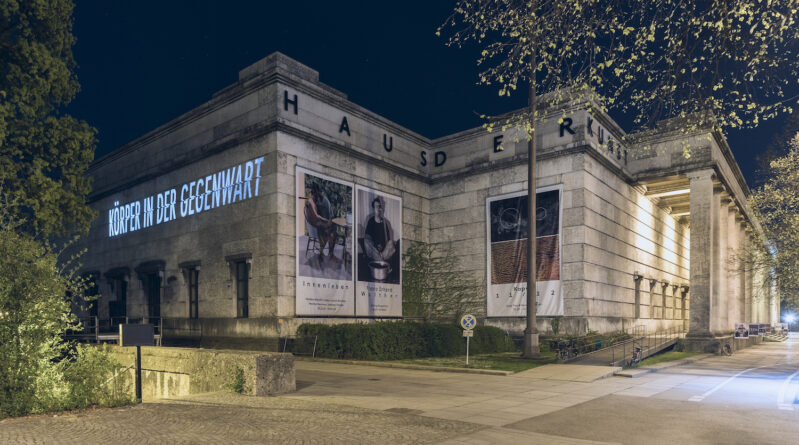
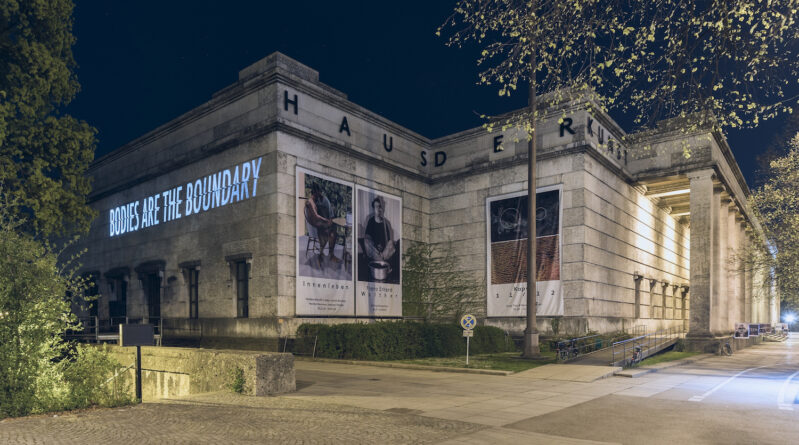
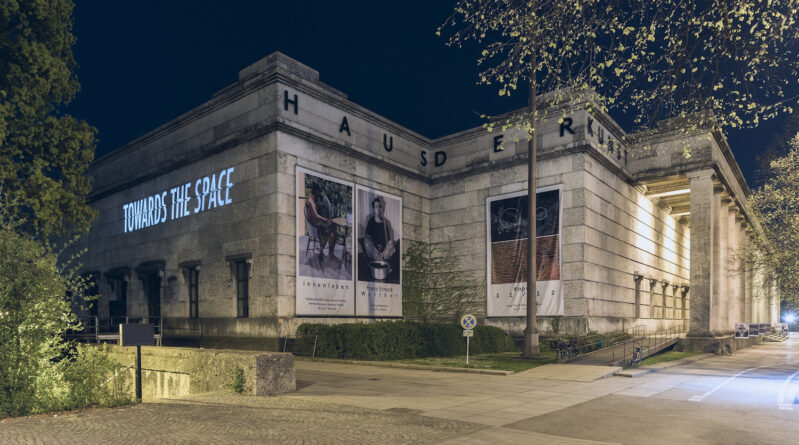
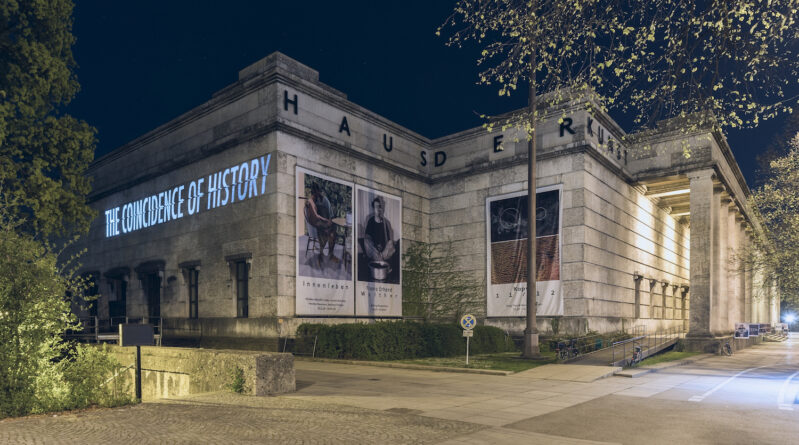
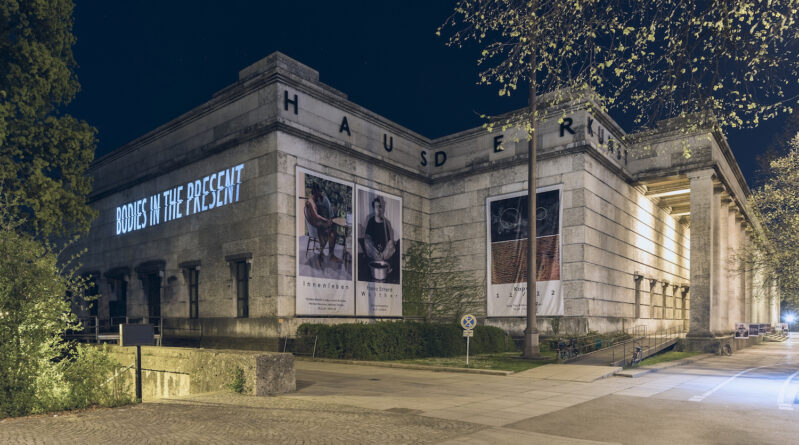
Andrea Lissoni, Artistic Director of Haus der Kunst since April 2020, on the work "Presence":
"Haus der Kunst will be engaging more and more with the two major transformations that the society of the time to come is facing: the sense of belonging and the digital realm. We should welcome the responsibility to share these transformations with audiences, offering the worlds of artists that, throughout the twentieth and twenty-first centuries, have contributed to anticipate and envision changes in a visionary way using a variety of media, as undoubtedly Franz Erhard Walter has done.
I’m very keen on thinking differently on how spaces have been and are used, on making the walls porous, on challenging the perception of spaces and time. Franz Erhard Walter’s Anwesenheit/Presence is the generous outcome of a dialogue within the institution and with the artist on how to share differently, questioning conventions of space and time, in trembling times.
For four days, Haus der Kunst’s website became an artwork.
For forty days, from dusk to dawn, Presence will be Haus der Kunst’s nocturnal heartbeat."
The work Presence will be presented for forty days at the western facade at Haus der Kunst.
Jana Baumann is the curator of the retrospective exhibition „Franz Erhard Walther. Shifting Perspectives“ at Haus der Kunst.
